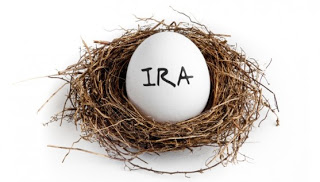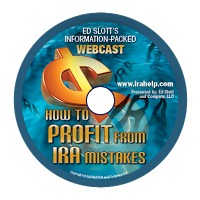 A small business owner establishes a SIMPLE IRA plan for his employees in 2009. A SIMPLE IRA plan allows participating employees to defer some of their wages to the plan, similar to a 401(k) plan. One of the rules for SIMPLE IRAs is that funds cannot be moved to any non-SIMPLE IRA for the first two years of participation in the SIMPLE. The employees who begin participating in the SIMPLE in 2009 cannot move their funds to another type of account until 2011. SIMPLE IRA funds can be moved to another SIMPLE IRA at any time.
A small business owner establishes a SIMPLE IRA plan for his employees in 2009. A SIMPLE IRA plan allows participating employees to defer some of their wages to the plan, similar to a 401(k) plan. One of the rules for SIMPLE IRAs is that funds cannot be moved to any non-SIMPLE IRA for the first two years of participation in the SIMPLE. The employees who begin participating in the SIMPLE in 2009 cannot move their funds to another type of account until 2011. SIMPLE IRA funds can be moved to another SIMPLE IRA at any time.In 2012, the business owner transfers his SIMPLE IRA from Company A to Company B, a large, reputable firm. Company B knows that the funds are coming from an existing SIMPLE IRA plan and accepts the transfer into a SIMPLE IRA with their company.
In 2013, the business owner becomes unhappy with Company B and wants to transfer his SIMPLE IRA to Company C. Company B refuses to let him transfer the funds. Their reason - you haven’t had the account for two years. In vain, the advisor tells them that the SIMPLE IRA was established in 2009. He reminds Company B that they accepted it as a transfer of an existing account. He points out that it is being transferred to another SIMPLE IRA. Nothing will budge them. They have nominated themselves as the SIMPLE police and what they say goes, no matter what. The advisor has escalated his request, but has yet to find anyone in the company with a better understanding of the SIMPLE IRA rules.
The client is faced with the option of taking a distribution of the account balance payable to himself and doing a 60-day rollover into either his new SIMPLE IRA or to an IRA. We never recommend 60-day rollovers, but here the client may have no choice. All because the large, reputable firm misinterpreted the two-year rule for SIMPLE IRAs.
If your IRA custodian tells you something that doesn’t sound quite right, check it out. Ask someone else. Ask to see where it says that in the IRA agreement or in the tax code. Or ask an Ed Slott trained advisor. You can find a list of our trained advisors on our website at www.irahelp.com. Mistakes can be costly to you.
- By Beverly DeVeny and Jared Trexler




























